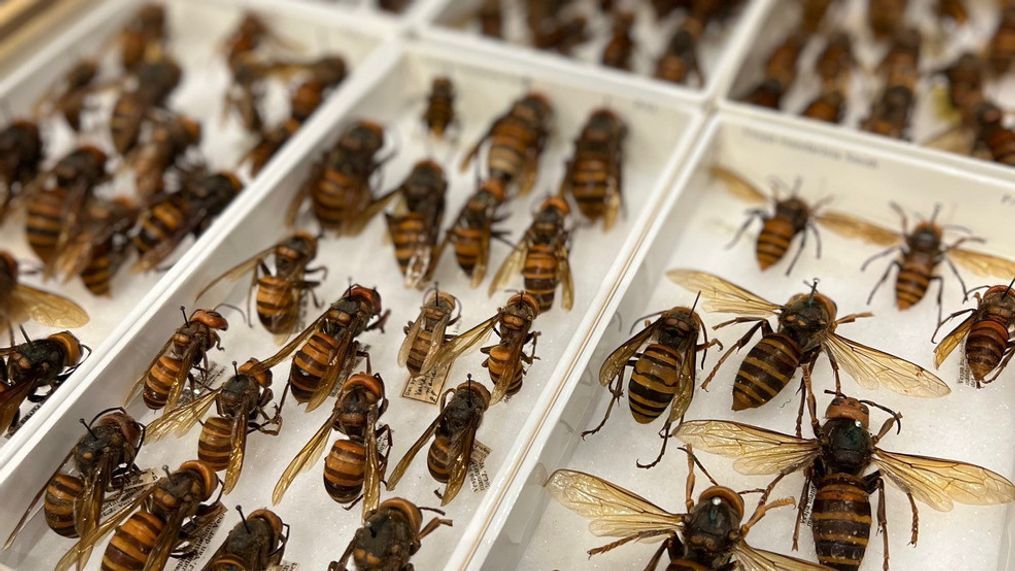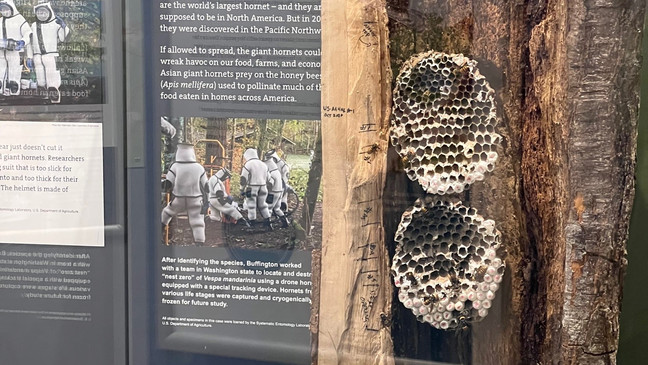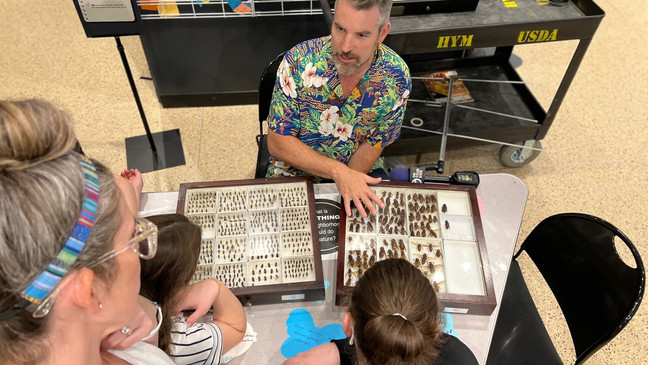1st murder hornet nest in US now on display for the public
WASHINGTON (WJLA) — A new exhibit debuted Tuesday at the Smithsonian Museum of Natural History in the nation's capital. The very first murder hornet nest located in the United States, which originated in Washington state, now resides in Washington, D.C.
The nest was found in 2020 in a tree on a property east of Blaine, Wash., after agents were able to successfully live-track a captured hornet that was fitted with a radio tag.
Included in the display is the nest itself, a "hornet-proof" suit the scientists wore when they approached the nest and even the specific hornet that was outfitted with the tracker.
"So, we have the original nest, which we're calling 'Nest Zero,' which was the first nest of the species to be removed from the environment," entomologist Matt Buffington explained to WJLA. "We [also] have a number of the hornets themselves. We have a hornet with a radio transmitter attached to it that was used to track it through the wilderness. And we have this incredible suit here scientists were wearing when they dispatched the nest because it appears to be hornet-proof – these hornets have a very, very painful sting."
Buffington, a research entomologist with the ARS Systematic Entomology Laboratory in Beltsville, Md., was on hand Tuesday to educate museum-goers about the hornets themselves, as well as the process officials took to locate the nest and prevent further spreading.
"A lure was developed by ARS scientists, that's a division of USDA, where they could get a hornet to come close – not kill it – but sedate it with carbon dioxide gas, tie a transmitter to it, wake it back up and let it go, then use an antenna to track it through the woods," he explained. " ... they needed to find where the nest was located. They successfully found it inside a red alder tree."
As far as the hornets making their way to the East Coast, he said that, at least for now, it's unlikely people in other areas of the country will see them. Unless, that is, they visit the Natural History Museum.
"They are not here [Washington D.C.] at the present time," Buffington said. "It's not known what their dispersal ability is – if they could actually even make it here or not. It's way too early to start panicking. Our scientists are doing everything they can out in Washington right now to determine 'are there more nests?' And if there are, dispatching them as quickly as possible."
The public can check out the display through early December.




